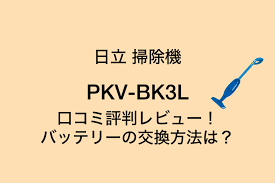Hitachi cordless vacuum cleaners are popular for their convenience and powerful performance, but like all battery-operated devices, their battery lifespan and compatibility are common concerns. In this comprehensive guide, we’ll explore everything you need to know about the Hitachi PVB-2525A battery, including its lifespan, replacement process, and how to maximize its longevity.
Understanding Battery Lifespan and Replacement
Cordless vacuum cleaner batteries typically last between 2 to 7 years, depending on usage and maintenance . For Hitachi models, the general guideline is approximately 2–3 years with daily use before replacement is needed . However, this can vary based on factors like charging habits, storage conditions, and frequency of use.
Signs of a Weakening Battery :
- Reduced runtime even after full charging
- The vacuum shuts off prematurely during use
- Difficulty holding a charge
If you notice these signs, it’s likely time to consider a battery replacement.
DIY Battery Replacement: Is It Possible?
Whether you can replace the battery yourself depends on your Hitachi model:
- Cassette-type batteries: Models like the PV-BH900H feature a user-replaceable cassette battery. Simply remove the old battery and insert a new one .
- Built-in batteries: Some models have batteries fixed with screws, requiring professional replacement via authorized service centers .
For the PVB-2525A, check your user manual to confirm the battery type. Cassette types are generally DIY-friendly.
Battery Price and Replacement Cost
While exact prices for the PV-BH900H battery aren’t listed, replacement batteries are considered consumables and are typically paid for even during the warranty period . Costs can vary, but investing in a genuine Hitachi battery ensures compatibility and safety.
Maximizing Battery Lifespan: Essential Tips
To extend the life of your Hitachi cordless vacuum battery, follow these practices:
- Charge after each use: Avoid storing the vacuum with a depleted battery, as this can lead to over-discharge and damage .
- Use the correct charger and avoid extreme temperatures: Charge at room temperature (5–35°C / 41–95°F) for optimal performance .
- Avoid continuous use after the battery is depleted: If the vacuum stops due to a low battery, recharge it immediately instead of repeatedly attempting to use it, as this strains the battery .
- For long-term storage: Fully charge the battery and recharge it at least once a year if not in use regularly .
Comparison of Key Battery-Related Aspects
| Aspect | Details for Hitachi Cordless Vacuums |
|---|---|
| Battery Lifespan | 2–3 years with daily use |
| Replacement Cost | Varies; batteries are paid consumables |
| DIY Replacement | Possible for cassette-type batteries |
| Charging Recommendation | Charge fully after each use; avoid complete discharge |
| Battery Type | Lithium-ion |
| Signs of Weak Battery | Shortened runtime, sudden shutdowns |
Features of Vacuums to Avoid
When selecting a cordless vacuum, avoid models with these characteristics :
- Excessive weight: Heavy vacuums make cleaning cumbersome, especially on stairs.
- Weak suction: This compromises cleaning efficiency.
- High noise levels: Can cause discomfort and disturb neighbors.
- Non-user-friendly dust disposal: Complicated mechanisms for emptying dust containers.
- Unreliable brands: Stick to reputable manufacturers to ensure quality and support.
Conclusion
Proper maintenance of your Hitachi cordless vacuum battery, especially the PVB-2525A, can significantly extend its service life. Always use genuine replacement batteries and follow the recommended charging practices. By understanding the battery lifespan, replacement process, and maintenance tips, you can ensure your vacuum remains a reliable cleaning tool for years to come.
